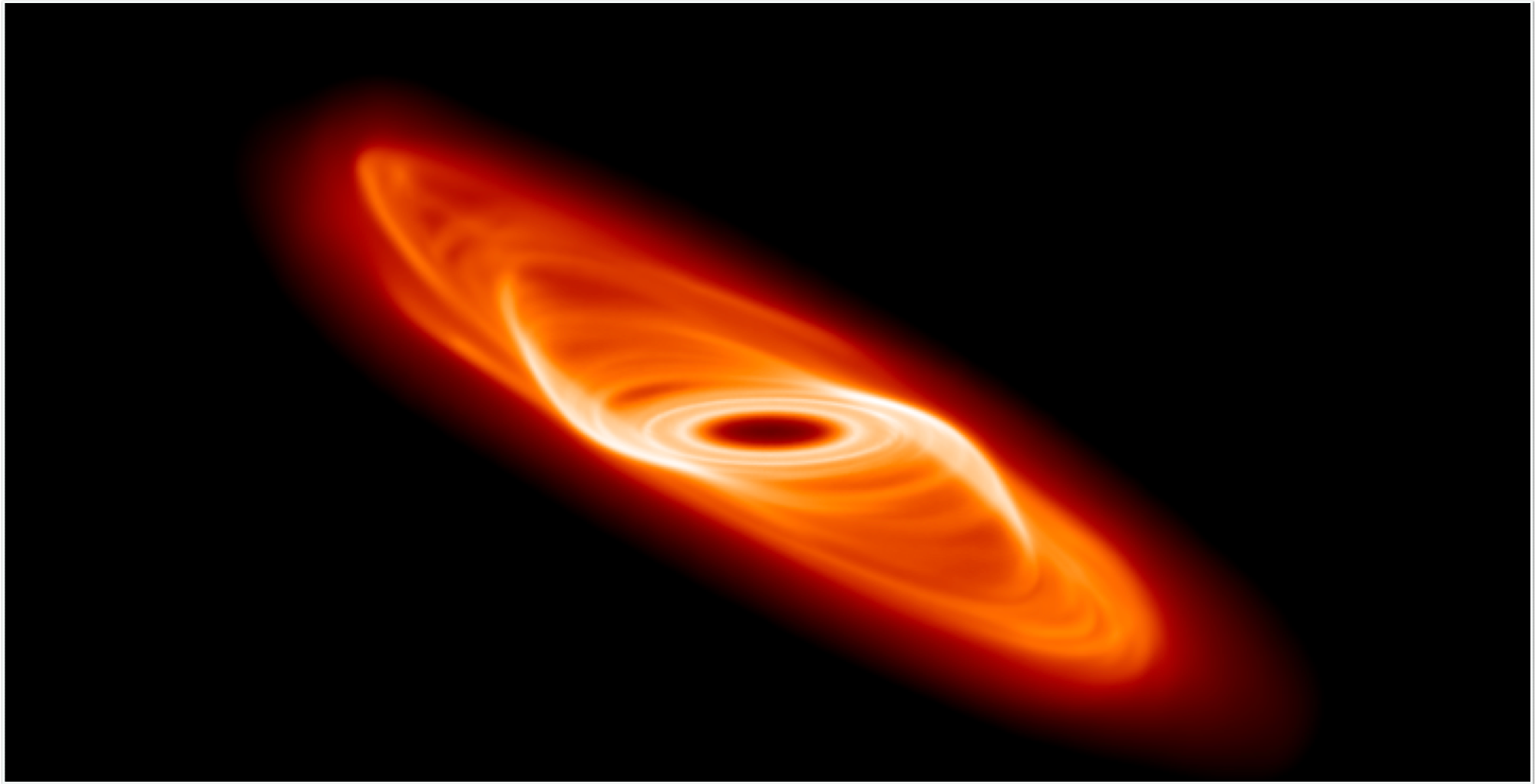University of Warwick’s new study illustrated the effect of passing stars, misaligned binary stars, and passing gas clouds on the constitution of planets in early star systems.
 Image showing a rotating protoplanetary disc with a warp in its initial stages. Image Credit: University of Warwick.
Image showing a rotating protoplanetary disc with a warp in its initial stages. Image Credit: University of Warwick.
Researchers have modeled how cosmic events like these exhibit the potential to warp protoplanetary discs, the birthplaces of planets, in the early development of solar systems. Their findings have been recently reported in the Astrophysical Journal.
The study was financially supported by The Royal Society and the Engineering and Physical Sciences Research Council, part of UK Research and Innovation.
The formation of solar systems is due to the existence of protoplanetary discs, huge spinning clouds of gas and dust that will ultimately coalesce into the array of planets that one gets to see in the Universe.
In the young stages of these discs, they tend to develop spiral structures, with all their material and dust dragged into thick arms by huge gravitational effect of the disc spinning.
However, astronomers have discovered a startling number of protoplanetary discs that, despite being big enough to have a spiral structure, show no proof of one. The research team from the University of Warwick has been analyzing what might avoid a disc from developing a spiral structure.
Sahl Rowther, a PhD student from the University’s Department of Physics developed a three-dimensional hydrodynamical simulation of a normal, flat self-gravitating disc with the help of a method known as smoothed-particle hydrodynamics.
In addition, he added different levels of curvature to the disc to warp it, to study the effect on the spiral structure of the disc. In all but the smallest warps, the spiral structure vanished.
The spiral structure present in a protoplanetary disc is considered vital for the development of planets via Gravitational Instability and the results enhance the understanding of how solar systems develop.
Warps will inhibit planet formation through Gravitational Instability, in the sense that these spiral structures, which fragment into clumps that eventually form planets, are where the disc structure will be disrupted. Anything that disturbs that spiral structure makes it harder for that clumping to occur and harder for the planets to form via Gravitational Instability.
Rebecca Nealon, Study Co-Author and Stephen Hawking Fellow, Department of Physics, University of Warwick
The researchers describe that the disc has been heated by the warp heats through inducing small perturbations to the velocity of the gas as it orbits. The gas requires being cool to clump together; therefore, in heating the disc, the spiral arm structure is wiped out.
Several approaches can be done to warp a protoplanetary disc. A few instances include if a huge object, like a star, passes next to a flyby encounter; if the disc encircles a binary star system that orbits out of alignment with the disc; or if a close source of gas accretes onto the disc.
In the past few years, significant growth has been witnessed by the proof of warped protoplanetary disc. This indicates that they are more common in the Universe than was thought earlier. Also, it offers a possible explanation for the big number of huge protoplanetary discs that do not display a spiral structure.
Normally we think of these discs forming in isolation, but that’s not really the case. It’s a chaotic neighbourhood, with lots of stars nearby, and you might have a star that passes close by and that gravitational interaction is enough to cause this warp.”
Rebecca Nealon, Study Co-Author and Stephen Hawking Fellow, Department of Physics, University of Warwick
“Once we started getting observations of warped discs, we had to start considering warps in our modeling. We need a greater consideration of warps in protoplanetary disc evolution and understanding that warps can impact existing disc evolution mechanisms and physics. We need to consider how warps affect all the factors in planetary formation,” added Nealon.
This study combines two physical effects that haven’t been combined before, the physics of self-gravitating discs with the warp. This is important because self-gravitating discs have been studied for a while and it’s a well-established field. Warps are a much more recent idea.
Sahl Rowther, PhD Student, Department of Physics, University of Warwick
Rowther added, “We have modeled this in the most simple way possible to allow us to be really sure about what we’ve done, and to easily demonstrate it.”
Journal Reference:
Rowther, S., et al. (2022) Warping Away Gravitational Instabilities in Protoplanetary Discs. The Astrophysical Journal. doi.org/10.3847/1538-4357/ac3975.